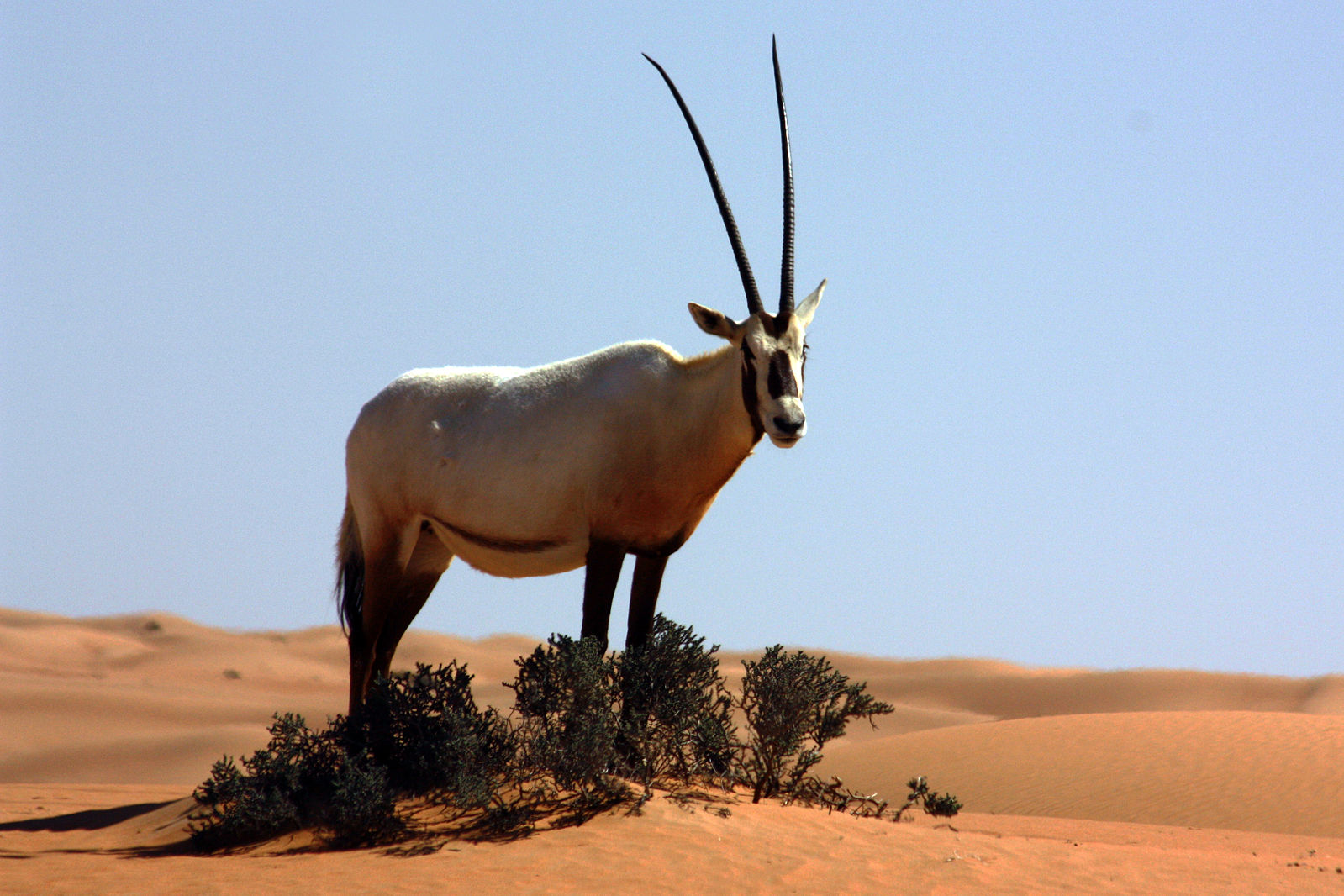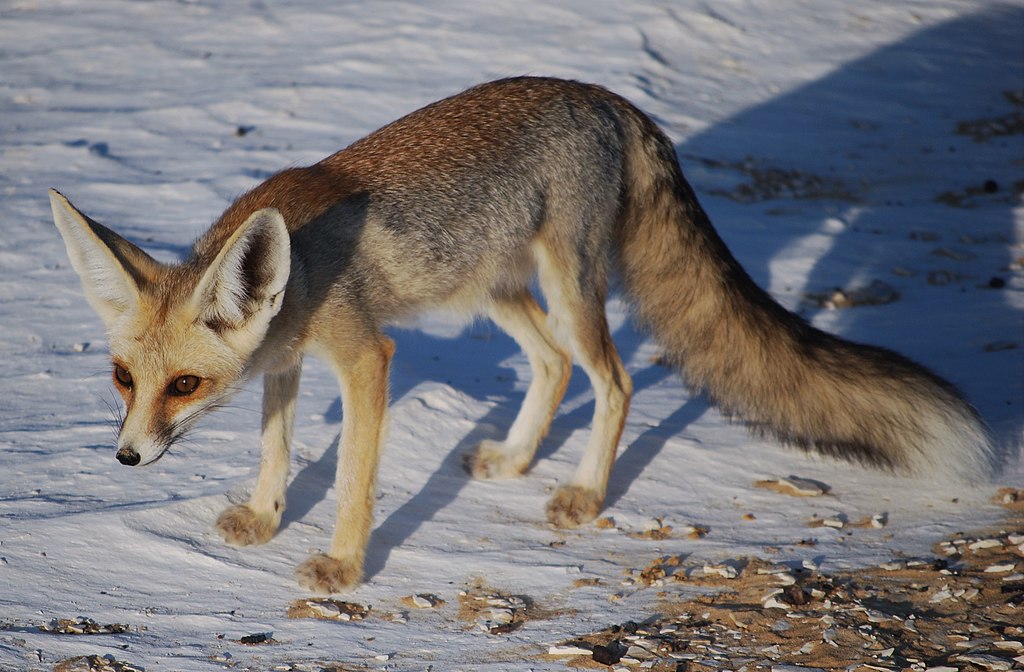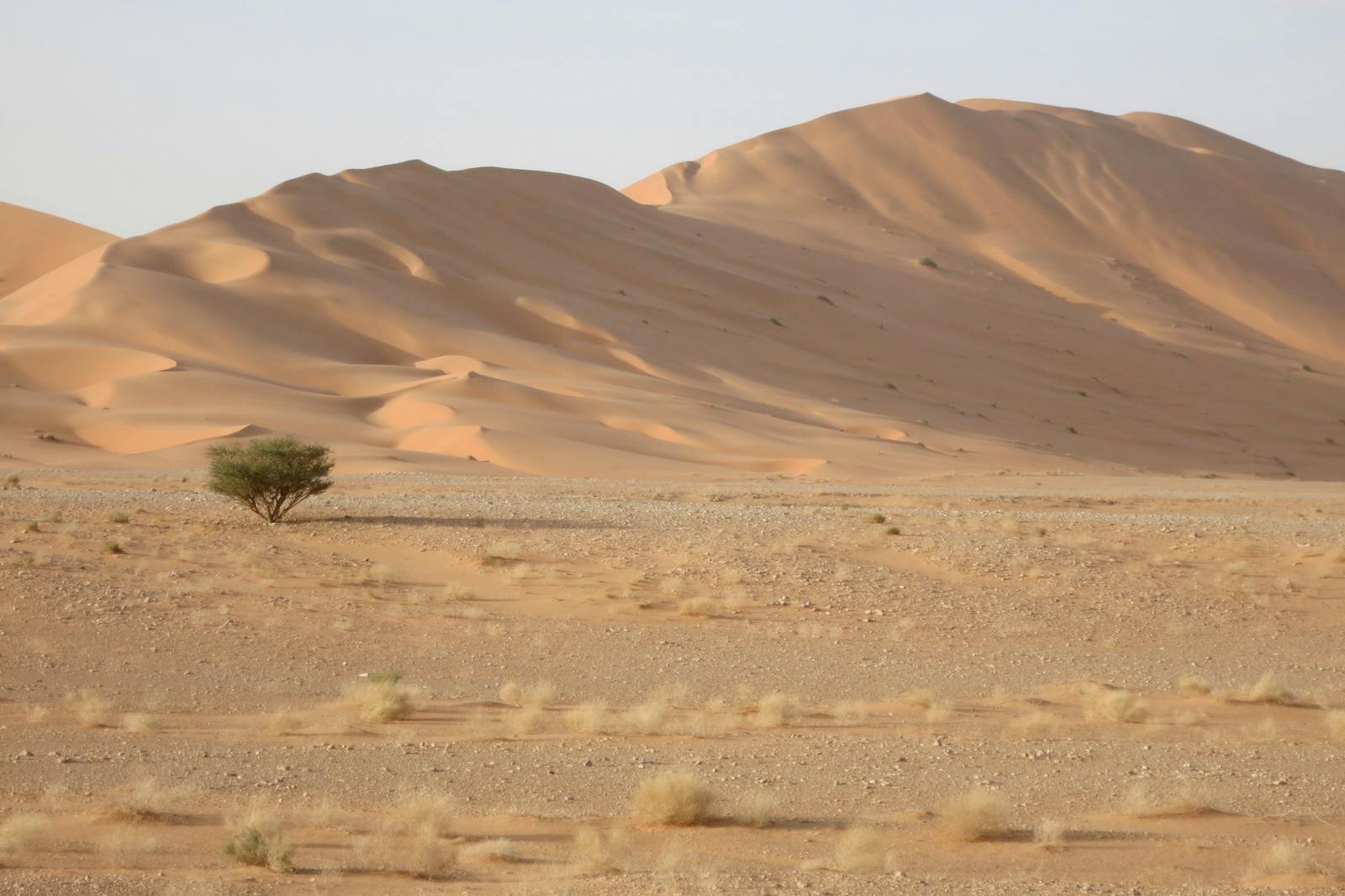Arabian Sand Desert
The ecoregion’s land area is provided in units of 1,000 hectares. The conservation target is the Global Safety Net (GSN1) area for the given ecoregion. The protection level indicates the percentage of the GSN goal that is currently protected on a scale of 0-10. N/A means data is not available at this time.
Bioregion: Red Sea, Arabian Deserts & Salt Marshes (PA26)
Realm: Southern Eurasia
Ecoregion Size (1000 ha):
71,704
Ecoregion ID:
810
Conservation Target:
78%
Protection Level:
0
States: Saudi Arabia, United Arab Emirates, Yemen, Oman
Towering brick-red sand dunes are dotted with Arabian camels and sporadic oases in this ecoregion, which has been home to explorers and nomads for thousands of years. Including the world’s largest and driest sand desert—the ‘Rub’al-Khali’—the region lies predominantly in Saudi Arabia, crossing into Yemen and Oman on its southern fringes, and the United Arab Emirates in the east. Although ‘Rub’al-Khali’ translates from Arabic as ‘The Empty Quarter’, this area is far from desolate. Dunes, reaching heights of 300 m in some cases, are home to a wide range of flora and fauna, and have been the site of successful reintroductions of gazelles and the Arabian oryx following overhunting in the mid-1900s.

The flagship species of the Arabian Sand Desert ecoregion is the Arabian oryx (Oryx leucoryx). Image credit: Sharp Photography, Creative Commons
This ecoregion encompasses both the major sand deserts—Ad-Dahna, An-Nafud, Al-Jafurah, Rub’ al-Khali—and smaller sand deserts in Saudi Arabia, characterized by high linear and crescent dunes interspersed with gravel and gypsum plains. The ad-Dahna desert, constituting a series of seven major sand ridges, links the northern an-Nafud desert to the vast, hyper-arid Rub’ al-Khali in the south, with Al-Jafurah sitting just north of the Empty Quarter.
The legendary quick sands of Umm-as-Sammim or ‘Mother of Poisons’, where herds of goats are reported to have been engulfed, can be found in the southwest of the ecoregion. The average temperature in the Rub’ al-Khali is around 36°C, although it can exceed 50°C in summer months, with slightly lower temperatures reported further north in an-Nafud. Rainfall is seasonal with an annual average of 100 mm in the north and less than 50 mm in the south. Some areas of the Rub’al-Khali may even experience up to twelve consecutive rain-free months.
Despite the extreme climatic conditions, vegetation is found across the entire area; the characteristic woody perennial Calligonium comosum grows along the unstable crests of the high dunes, and in the lower slopes species such as Cornulaca arabica, Moltkiopsis ciliata, Haloxylon persicum, and Dipterygium glaucum create sparse communities. A succession of annuals and grasses including Neurada procumbens and Danthonia forskallii populate the sands following sporadic rainfall and trees such as ghaf and Acacia ehrenbergiana can be found on the outskirts of the desert.

Caracal. Image credit: © Martin Harvey via Wildscreen Exchange
The red sands host several mammal species, including sand cat, mountain gazelle, reem gazelle, Ruppell’s fox, dromedary, caracals, and the endemic Arabian oryx and Rub al-Khali hare. The desert is also home to a wide range of beetles and reptiles, including the regionally endemic Jayakar’s sand boa, desert monitor, and Arabian sand fish, which can ‘swim’ remarkable distances through the sand. Upcher’s warbler, sand partridges, and the trumpeter finch are common desert birds. Endemic plant species include Limeum arabicum and Calligonium crinitum spp.
Nomadic Bedouin have long bred livestock in their tribal territories across the desert. This has left a significant mark on the landscape: the cutting of vegetation for firewood and overgrazing by goats, sheep, and camels over hundreds of years led to the reduction of plant cover in many areas. The Arabian oryx was declared extinct in the wild in the 1960s, but following an extensive captive breeding and reintroduction program, their status was updated from ‘endangered’ to ‘vulnerable’ in 2011. One of the oryx’s release sites was the large ‘Uruq Bani Ma’aridh’ Protected Area in the west of the Empty Quarter, which is thought to be the only place in the world where viable, free-roaming populations of this ungulate exists. Several national protected areas are also established in the UAE.

Rüppell's fox (Vulpes rueppellii) in White Desert, Egypt. Image credit: HelmutBoehm, CC by 3.0
The ecoregion has become increasingly popular as a tourist destination in recent years, with excessive use of motorized vehicles on the dunes posing a significant threat to biodiversity and the integrity of the dune structures. Population growth, especially in the southeast region of the Rub’al-Khali, has also led to vast constructions in the desert, as has exploration for oil and gas.
Hunting of resident mammal populations largely by visitors has caused significant declines in gazelle and oryx populations. The Arabian sand deserts are also one of the most sensitive regions to climate change; the predicted hotter and drier conditions in the next decade are expected to have severe impacts on the organisms finely adapted to live here.
Priority conservation actions for the next decade
- Reduce hunting pressure on oryx and gazelle populations, encouraging an empathetic relationship between local stakeholders and their environment.
- Develop a sustainable grazing management plan in conjunction with local herd owners.
- Establish a more ecologically sensitive and low-impact tourism strategy.
-
-
- Hall, M., et al. (2011). ‘IMPORTANT PLANT AREAS IN THE ARABIAN PENINSULA: 3. ‘URUQ BANI MA‘ARID’. Edinburgh Journal of Botany, 68(2), 183-197. DOI:10.1017/S0960428611000047
- Vincent, P. (2008). ‘Saudi Arabia: An Environmental Overview’. Taylor & Francis. ISBN (e-book): 978-0-203-03088-2
- Williams, J.B. et al. (2012). ‘Climate change and animals in Saudi Arabia’. Saudi Journal of Biological Sciences, 19, pp.121-130. DOI: 10.1016/j.sjbs.2011.12.004
-
Cite this page: Arabian Sand Desert. Ecoregion Snapshots: Descriptive Abstracts of the Terrestrial Ecoregions of the World, 2021. Developed by One Earth and RESOLVE. https://www.oneearth.org/ecoregions/arabian-sand-desert/
-

.png?auto=compress%2Cformat&w=300)

